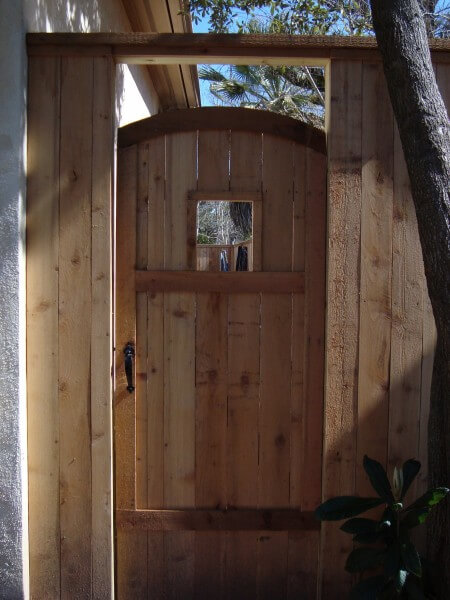The Fascinating History of Fences: How They Evolved Over Time
If you look around the world, it’s not hard to find evidence of humans trying to construct and maintain barriers. From walls to terrace arrangements, and even virtual barriers like cybersecurity mechanisms, enclosing and protecting space is an integral part of human life. Perhaps the oldest and most common form of human-made boundaries is the fence, which has been used for centuries to separate and define property lines, with some of earliest archaeological discoveries of fencing going as far back as 3000 BC.
From its inception, the fence evolved over millennia and experienced several changes to become the ubiquitous symbol of northern American suburban life that it is today. In this post, let’s explore the fascinating history of fences to understand how they have evolved over time.

The History of Fences
The history of fences is as diverse and varied as the many types that exist today. Fencing has been used throughout history to protect, divide, or enclose areas for a variety of reasons. In ancient Europe, for example, thick walls of stone encircled city strongholds and were used as a form of protection in times of conflict. Meanwhile in feudal Japan, tall bamboo stakes were erected around villages and sacred sites to keep invaders at bay.
Implicitly, the ability to access these physical barriers required some sort of credential — such as an invitation or pass — suggesting the presence of a class-based system that excluded certain people from accessing land. Thus, while fences can be viewed protecting private property or providing security against intruders, they can also be seen as gates by which entry can be regulated to maintain hierarchical social order.
The use of fencing extends further back in history; across various ancient civilizations, such as those in Egypt and China, perimeter walls were often constructed to denote separation between opposing groups or forces. In both cases the boundaries these walls represented were deeply symbolic and held strong religious significance. Although its primary purpose was often defense against external threats, these accumulations could act additionally as protective buffer zones or provide much needed stability for cities under siege.
Despite their many practical uses throughout history, it’s fair to say that fences have also had a divisive impact on communities and exerted control over who was allowed in a region and who was denied entry. Ultimately, this proves that fences are more than just large logs carved from wood—they’re symbols of power with the potential to shape lives and determine the destiny of entire countries.
With this fascinating history in mind, let us now turn our attention to fence structures in antiquity—specifically ancient uses of fences and how they evolved over time.
- Fences have been used for security, privacy, and decoration since antiquity.
- In Ancient Greece, the first recorded use of wooden fencing dates to 600 BC.
- According to archaeological evidence, it is believed that the Ancient Egyptians were the first to use metal fencing around 5,000 years ago.
Ancient Uses of Fences
Throughout history, fences have been used for a variety of purposes ranging from practical applications to symbolic meanings. Ancient cultures relied on the use of fences to protect their settlements and to delineate boundaries. The oldest evidence of fences used for either protective or symbolic purposes dates to the Neolithic age, from around 10,000-5,000 BCE.
One of the earliest uses of fencing was as a functional or defensive measure. Stone walls were common in settlement sites during this time, constructed as a means of perimeter defense. In some civilizations, wooden pickets may have been erected pieces pointed upwards were sometimes found at the base of walls to create an extra security measure—a precursor to modern day palisade fences. These prehistoric posts usually stood between four and five feet high and were made from either wood or stone.
Additionally, ancient cultures incorporated fence symbols into artwork and architecture, believing them to possess spiritual powers and serve as protective structures against evil forces. In some cultures, they were thought to symbolize enclosure and safety, while in others they represented separation from outsiders or enemies. Some ancient texts suggest that certain enclosures offered spiritual protection from harm or danger by accommodating benevolent gods and spirits within its boundaries.
Although the purpose behind these fence-like structures appears to have varied across different ancient civilizations, one concept became universal: fences held great symbolic importance to them all. Whether built for defensive, celebratory, or cosmic reasons, fences played an important role in the social dynamics of many ancient cultures—the same type of role that still stands today.
Today we understand different types of fences more clearly than ever before thanks to developments through history.
Different Types of Fences
Fences have come a long way since their ancient beginnings. Over time, fence types evolved and adapted to better serve the needs of their owners and surroundings, as well as to meet changing societal expectations and building regulations. The earliest fences actually served primarily a spiritual role and were constructed using stone or wood to form circular enclosures. As we moved closer to the modern era, different types of fences began to appear!
When it comes to fencing material, there’s no one-size-fits-all solution. Each type of fencing has advantages and disadvantages depending on what factors matter most to the consumer such as durability, privacy, cost, climate, etc. While some prefer metal or vinyl for its long-lasting protection against the elements, others may value wooden options like red cedar due to its aesthetic appeal and natural insulation. Chain-link is also a common choice due to its affordability, easy installation process and versatility in being able to accommodate different climatic conditions.
However, when it comes to security, one should always use caution before settling on a decision as not all fences are created equal in this regard. Assessing any potential risks when selecting your fence type can be very important because if criminals are able to easily scale your fence or gain access through gaps in the barrier then your security doesn’t mean much.
Regardless of which style you choose, planning ahead and researching the local building regulations is essential in order to guaranty that your final product meets both safety standards and architectural guidelines. Now that we have discussed the different types of fences available today let us move into our next section and explore the materials used in creating them.
Materials Used to Create Fences
Throughout history, humans have looked for materials that can provide protection and boundaries around their properties. Initially, fences were constructed out of natural materials, such as stones or branches found in the nearby area; fence building was not a precise process and could be done with limited materials. As humans advanced further and technology advanced, new materials began to become available which allowed them to create more modernized fences.
Today, many common fencing materials are available which have been specifically designed for this use. Wood has been a popular choice due to its strength, flexibility, and cost-effectiveness. However, it is high maintenance and is susceptible to decay over time when not properly treated. Metal is also an option that often comes in the form of wrought iron or aluminum. While it can last longer and requires less maintenance than wood, metal has a higher cost associated with it and it does not provide privacy. Finally, vinyl is considered one of the most durable options currently available for fencing, but it can be difficult to repair if damaged.
Overall, each material used to create a fence offers its own advantages which must be weighed against each other before making a selection. Depending on the specific needs of the space being fenced off and the budget allocated for the project, either wood, metal, or vinyl could work as viable options.
How Fences Are Built
The construction of fences varies widely, but all involve using various materials and techniques to create a barrier between two surfaces. Some types of fencing are built by attaching stakes into the ground, while others are more permanent structures designed to last for decades. There is an ongoing debate among fencing experts as to which type of fence is best: those that require less maintenance or those with greater longevity.
Those in favor of low-maintenance fences argue that once properly installed, these barriers require less upkeep over time. Low-maintenance fences can be installed quickly, enabling property owners to have a functional barrier to maintain their security and privacy sooner rather than later. With fewer components required for installation, the associated costs of this type of fence are often lower as well.
On the other hand, some professionals uphold the long-term value that can be provided by higher-quality fences that may cost more upfront. By investing in these more costly materials, the benefits will likely prove the initial expense worthwhile due to increased strength, durability, and protection from weathering damage. Additionally, many high-quality fences come with warranties that provide added assurance in terms of protecting against structural defects due to manufacturing errors.
Regardless of whether they are constructed out of low-cost materials without elaborate design features or made with more expensive options intricately crafted out of metal or wood, it’s clear that fences are important elements that contribute to our cultural identity and sense of security in both urban and rural settings alike. As we explore the cultural implications of how fences both literally and symbolically define boundaries between people and places, it is fascinating to recognize how history has evolved around them.
Cultural Implications of Fences
Fencing in the United States has taken on a variety of cultural implications. It serves as a boundary marker and symbol of ownership, physical protection for property, and even division between ethnic or religious communities. Cities such as St Louis, Milwaukee, and Omaha had large immigrant populations during the late 19th century; as a result, ethnic neighborhoods emerged with fences lining their boundaries to designate where one neighborhood ended and another began. Additionally, people often erect fences to establish a perimeter which they deem is necessary to protect their property from thieves or intruders.
In essence, a fence can be understood as an invisible barrier that psychologically separates people from one another while also setting a tone of control. Though often intended to signify ownership and security, many have argued that these structures contribute to feelings of isolationism and prevent people from coming together in unified communities. On the other hand, advocates for fencing argue that it can make a community safer by increasing surveillance and controlling access to homes and property. While this debate remains ongoing in residential areas today, it’s clear that fencing can have both functional components as well as highly symbolic meaning depending on the context in which it is used.
Since its origin, fences have held significant meaning in various cultures around the world. In many traditional societies fences served multiple functions—both practical and ritualistic—and were essential components of a successful settlement. This tradition of using fences for practicality while also imbuing them with symbolic cultural values continues today in many different parts of the world. In the next section we will explore some common traditional and symbolic meanings associated with different kinds of fences around the world and how this understanding has evolved over time.
Traditional and Symbolic Meaning of Fences
Throughout history, fences have been used as more than just a security measure. Oftentimes they also served as a tool to represent and understand the traditional and symbolic meanings attached to them. The origin of these meanings can be traced back to the earliest evidence of human culture, where fences served as a representation of wealth and status.
In many ancient societies, fences made of solid materials like wood, stone, or mud-brick were seen as a sign of higher social standing. Those who could afford to build fences around their land would be seen as wealthier, and this perception still rings true in modern society today with the use of privacy fencing around homes or backyards.
Others argue that fences carry with them deeper cultural significance and are often used as a physical manifestation of boundaries between certain groups or social classes. From the 19th century onward, when Europeans began to move into new countries and settle in new lands, fences were commonly seen to create territorial boundaries between different ethnic groups within an area. This understanding is still relevant today during disputes over land ownership within politically divided countries.
The exact meaning behind the use of fences has changed drastically over time due to different contexts and cultural understandings; however, the traditional practice of using them remains the same throughout history. Whether it is for safety, wealth or isolation purposes, there is no denying that fences still carry significant symbolic value and importance in many societies today.
To conclude this section on the traditional and symbolic meaning of fences, it is important to note that despite their ever-shifting uses, they continue to hold great cultural relevance in both past and present societies all around the world. With this in mind, it is clear that exploring the history of fences provides an invaluable insight into how human interactions with our environment continue to evolve over time.
Conclusion on the History of Fences
The history of fences is a long and complex one, spanning centuries and continents. From ancient walled cities to modern picket fences, a wide variety of materials and designs have been used to separate, protect, or define property boundaries. Fences have played important roles in cultures around the world, from providing security to providing shade.
In this article, we explored how fences evolved over time and how different cultures achieved their unique fencing needs. We found that fence styles were adapted for local climates and engineering availability and vary immensely globally. For example, some Native American tribes used wattle fences with poles woven between them for protection from wind and animals, while other cultures used tall stone walls with intricate carvings for protection from intruders. No matter the material or location, fences often acted as symbols of status and ownership.
When it comes to the use of fences today, opinions may vary. There are individuals who feel that the installation of a fence can disrupt the beauty of a natural landscape or urban environment. On the other hand, some people argue that erecting a fence allows for greater security and privacy while also highlighting property boundaries.
Ultimately, fences play an important role in our lives today as they did thousands of years ago. They maintain our privacy while allowing us to enjoy the outdoors in both rural and urban areas alike. As technology continues to advance, so too will new options become available for fencing materials and designs; however, it’s clear there will always be something special about the timelessness –and beauty-of traditional fences.








